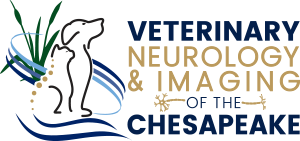
BETTER OUTCOMES.
HEALTHIER LIVING.
ENHANCED QUALITY OF LIFE
Veterinary Neurology Of The Chesapeake
WE ARE HERE FOR YOU
ON-CALL FOR NEUROLOGICAL EMERGENCIES 24/7 & 365 DAYS A YEAR
Trying to reach us outside of business hours? Connect with your local emergency vet first! They will assess whether your emergency is neurological and contact our on-call doctor.
Our front desk is staffed Monday – Friday, 8AM – 6PM
GET CARE FOR YOUR PATIENT
-
REFER FOR NEUROLOGY
We offer neurological evaluations, recommendations, neurosurgery, & post-operative care
-
REFER FOR IMAGING
MRI Scans with continuous veterinary supervised anesthesia
-
REQUEST A REFILL
Prescription refill medication refill orders fulfilled on-site or sent to your local pharmacy
-
REPORT A SEIZURE
This form should only be used by current patients in non-emergency situations
SERVICES
We are proud to deliver the most current imaging and innovative surgical techniques to provide your pets with the best neurological care available.
TRUSTED EXPERTS FOR YOUR FAMILY
Our veterinarians have more than eight decades of combined experience and are supported by a fantastic team of technicians and administrative staff.
Neurology & Neurosurgery
DR. JAY MCDONNELL
DR. JULIANNA MANNIX
Neurology & Neurosurgery
DR. LARRY GAINSBURG
Neurology & Neurosurgery
Having a dog with seizure episodes can be nerve wracking. The entire staff has always been caring, supportive and respectful and there to answer any questions and concerns. Their office may be a bit out of the way for us but the drive for the expert care has been well worth it!!! Thank you!!!





